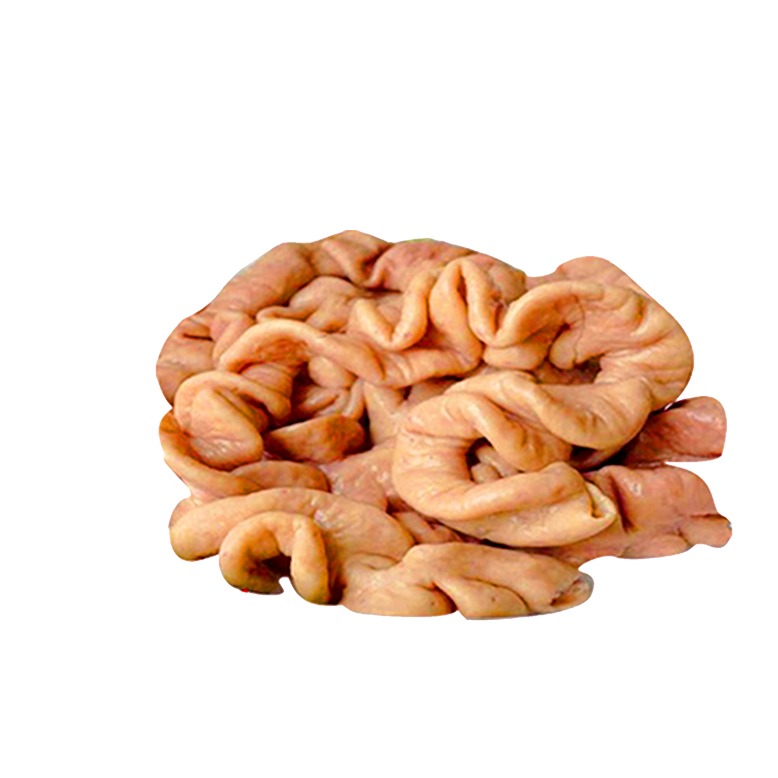Chitlins

Chitlins, or chitterlings, are the small intestines of pigs. They are washed and soaked, cleaned and pulled, then cooked for hours until they are tender.
They're often used in Southern cuisine, and enjoyed in various dishes and can be purchased in meat markets, usually frozen and ready to go.
Generally you'll have to clean them yourself. You must open each piece and scrape the fat. The fat is discarded as it has a very strong flavor. While the vast majority of chitterlings are pork, sometimes intestines from other animals, such as cows are used.
They're typically boiled, fried, or stuffed with mincemeat and served as just one part of a larger meal. They take a bit of getting used to, but like all foods of your childhood, once you learn to enjoy them you long for them for the rest of your life.
To keep chitlins fresh, store them in the refrigerator in an airtight container or wrapped tightly in plastic wrap. Ensure they are kept away from other foods to prevent cross-contamination. Proper storage helps maintain their quality and prevents spoilage.
Chitlins should be cooked and consumed within a few days of purchase to maintain their freshness and safety. Proper refrigeration is essential to prevent spoilage and the risk of foodborne illness. Ensure to use them promptly for the best flavor and quality.
Chitlins are high in protein and contain small amounts of vitamins and minerals like iron and zinc. However, they're also high in cholesterol and fat, so they should be enjoyed in moderation as part of a balanced diet.
Quick Picks
Chef's Level
Tips and Hacks
Step up your veggie dip game. Instead of using a conventional serving bowl, use a hollowed-out red cabbage. Not only does it add a colorful and eye candy element to your table, but it also serves as a practical and edible vessel for your favorite dip.
Tell me more...
Featured Offering
Stewed Chicken And Rice
Recipe of: Mexico

Filed Under: Poultry
Prep Method: Stove Top
Base: Chicken Pieces
Made with: 19 Ingredients
Keldons Cookery © 1998 - 2025 All rights Reserved | Secured with SSL
Cook what you eat. Love what you cook!
This is day 346 of 2025